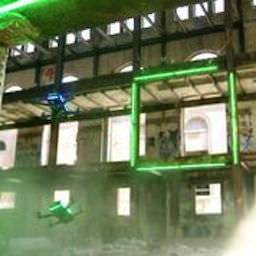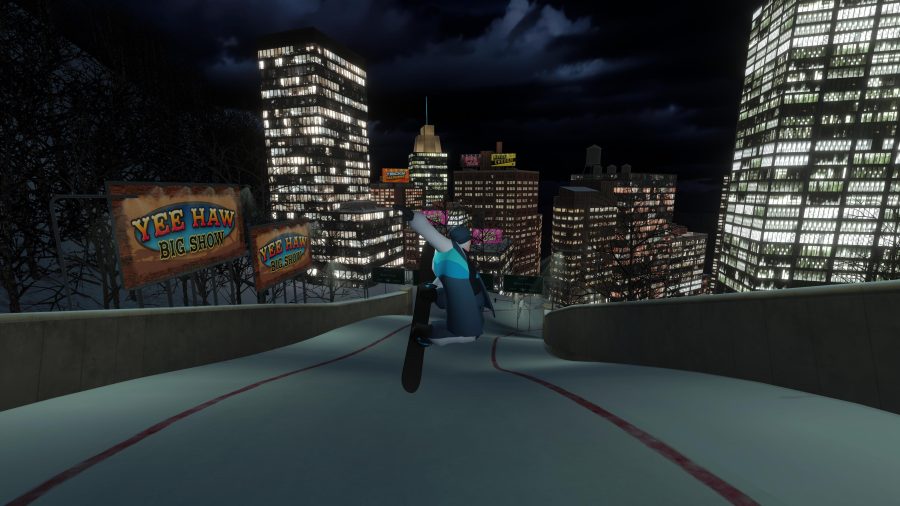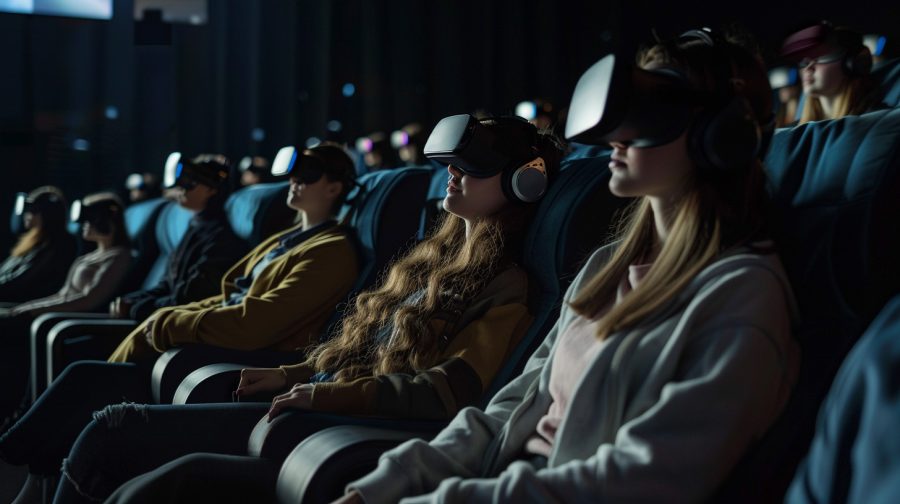The Drone Racing League (DRL) has been getting a ton of press recently, and a quick trip to their homepage does not disappoint. Under video of drones blasting through abandoned factories and major league ballparks is the following description of the sport: The top pilots in the world. Epic courses.
That’s pretty dramatic for a brand new sport, but when you find out that Tony Budding is their Director of Content, then suddenly it isn’t so surprising. After all, this is the man who helped build the media machine around CrossFit and then went on to start the first fitness sports league, GRID.
At both, he was one of the first media leaders to start to understanding how today’s world of technology and data was merging with the world of sports. GRID came out of the gate built for the world of multiple screens, streaming real-time video and game information during the events to every device imaginable across a custom data platform they built themselves. And not surprisingly, Budding has an equally outrageous plan for the content around the DRL and how people will interact with it. We sat down for our exclusive interview with him to find out exactly how DRL is merging today’s world of sports with tomorrow’s world of VR and augmented reality.
ReadWrite: For people who have played with other remote controlled vehicles, drones are a different beast, aren’t they?
Budding: The drone technology is evolving incredibly rapidly, as well as the number and types of drones out there. A lot of the consumer brands out there include stabilization and GPS, and then you look at the drones we are racing. There is no stabilization, no other controls other than the pilot’s input; these are the high-performance Formula One cars of the drone world. Incredibly responsive, but that also means if you don’t know what you are doing it’s an imminent disaster from a flight standpoint.
RW: But is was equally important that fans could follow along, right?
From the get go, it was absolutely core. DRL designs all of its own drones for two main reasons. First, visibility. You have seen the footage and you can see there are four drones up every race, and they have four very distinct colors. There are 100 LED lights on each drone and a lot of the size and weight is from housing and displaying those LEDs. And then we custom designed our own fleet because of the technology and the RF. There is always interference with RF, and the more drones you have in the air the more the interfere with each other. And then the more complicated the space is if you have metal, or walls, or anything like that in the area, you start to degrade the RF.
So we have had to create a brand new proprietary technology that allows drones to fly in complex areas with four drones up. But if you take care of that it becomes a pilot race and not a manufacturers race since all the pilots have identical drones. So it becomes a test of pilot skills.

RW: Where is this sport going? Is it an online product, a broadcast platform, fans in the stands?
It’s certainly an online platform. Is it exclusively an online platform, I don’t know. As you know we are right on the cusp of a huge revolution in how content is consumed. There are a lot of people these days who don’t listen to radio or watch broadcast TV, especially younger people.
And the other thing that is becoming increasingly interesting is 360 and then VR. I have played around with some 360 stuff, and it’s cool. But when I am watching video content I want to be entertained, and I don’t want to work at it.
Now, if I could don a pair of goggles and be able to have some kind of interaction, then I think the VR and 360 stuff are a slam-dunk. So another element for us is the development of gaming. The pilots have goggles on and video game controllers, but they are controlling an object that is actually there and is flying around so it’s this blurring of the lines between virtual gaming and reality. We have a rudimentary game online right now, where you’ll fly our first course in an abandoned power plant.
RW: You really seem to be focusing on this interaction of people and machines
Yeah, for sure, it’s fascinating. So FPV flying, the actual technology is less than eighteen months old and it is growing very rapidly. And with more and more people flying now, I think the community at least, and maybe the world, is starting to see that this could be a real thing. Now there is more incentive for people to want to get better, we have pilots coming out of the woodwork who are incredibly talented so as we continue to refine the technology and the pilots continue to get better. I mean if you think of me and you driving a car down the road and even a NASCAR or Indy Car driver, there’s not even a comparison. and these guys have been racing their whole lives and with this drone technology only being eighteen months old. So you think about over the next couple of years how much better these pilots are going to get, what that means for the races, what that means for the technology it is going to be a fascinating journey.
RW: Where is this technology going to take us?
So for example, video games have been around for 35 years in various forms and they know how to keep people engaged. So if you look at what happened in the video gaming world, you have things like boosts and penalties and power drops or power boosts. You have things like combat, laser weapons. So we could do something virtually where you have lasers on drones and if you hit another drone they would power down fifty percent for five seconds to influence the race. You could have two person operation where you have a pilot and a gunner and then you are blending combat and racing.
RW: This sounds like augmented reality, but coming from a different angle.
Yes! That’s right augmented reality starting with the reality, instead of trying to come at it the other way. There is just a ton of people who want to be engaged, and you could do things like a popularity contest where the audience can vote a drone over five seconds and the drone with the most votes gets a quick boost of power and the one with the least gets a five-second decrease in power. There are just so many things you can do to increase the engagement and keep people engaged in this competition.
It’s pretty obvious after talking to Budding that the DRL is aiming to be more than just drones. They live at the intersection of sports, VR, and fan interaction. As such, it will be fascinating to see how their team puts this together over the next year. Gentlemen, start your goggles!










